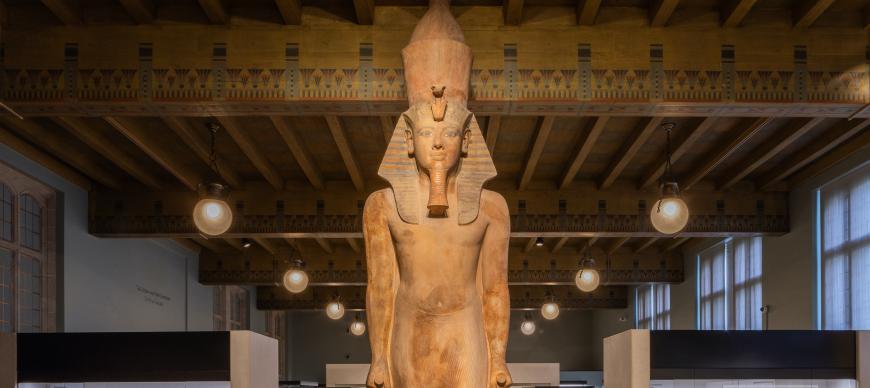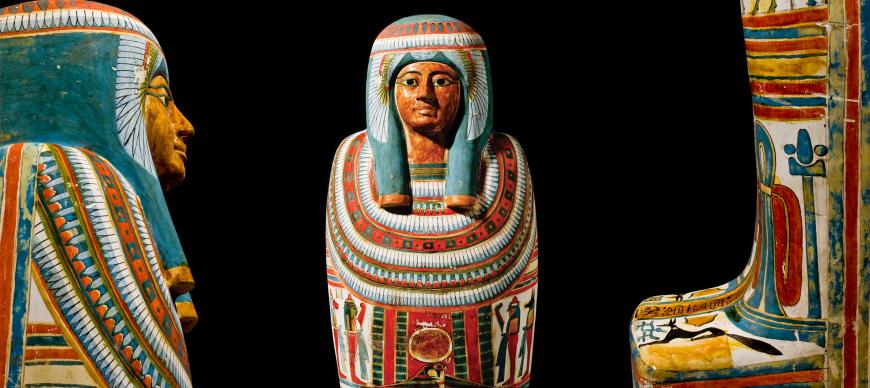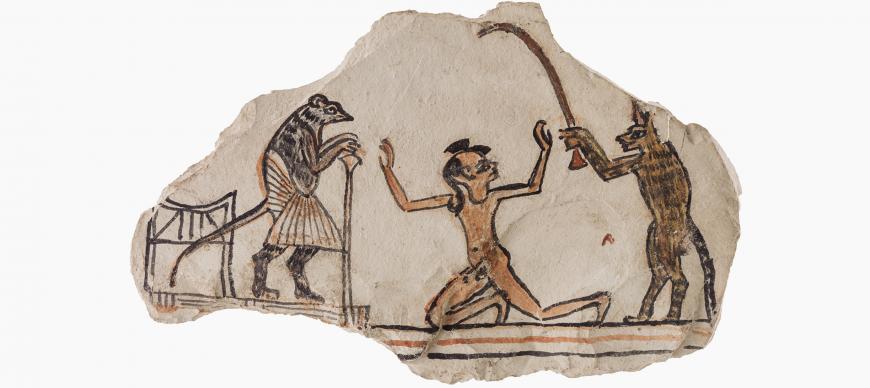The Joseph and Mary Grimshaw Egyptian Gallery contains nearly 800 objects dating from the Predynastic Period through the Byzantine period (5000 BCE–600 CE), allowing you to witness kingship, daily life, and death in the shadow of a monumental statue of King Tutankhamun. Highlights of the gallery include the brightly painted coffin of a temple singer named Meresamun, a written account of the first labor strike in history, an annuity contract between a man and his wife written in flowing demotic script, and a group of statues from a tomb that show people engaged in everyday tasks.
A portion of the objects on display in the Joseph and Mary Grimshaw Egyptian Gallery were excavated by ISAC archaeologists at Medinet Habu (1926–33). Additional objects were acquired through the University of Chicago’s financial support of the Egypt Exploration Fund and the British School of Archaeology in Egypt. Key objects were also purchased by James Henry Breasted in the early twentieth century.




